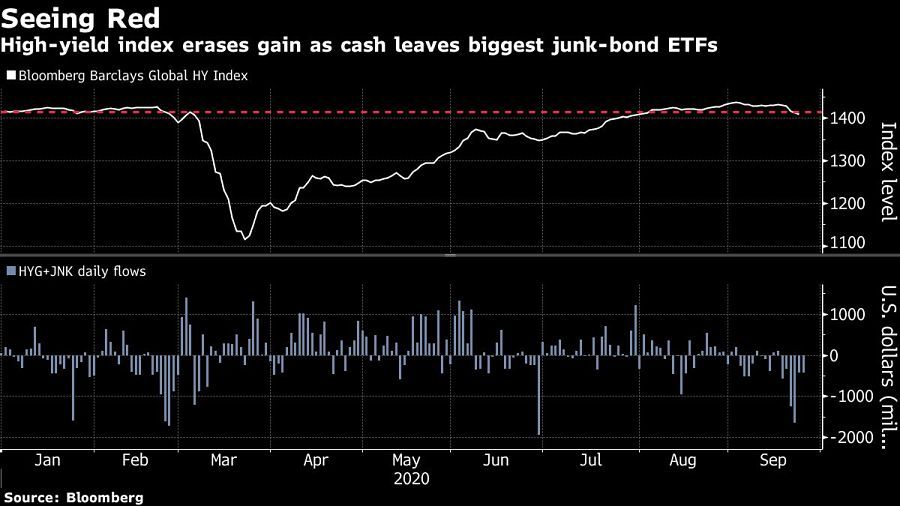Inflation, dormant for a decade, captured the market’s attention all summer, with unprecedented Federal Reserve stimulus and a $2 trillion federal spending package set to juice prices.
The fever, it appears, has now passed.
Popular trades that couldn’t lose for months have started to come undone. Growth stocks have plunged more than 13% in three weeks. Gold’s rally to an all-time high has reversed, and the dollar is strengthening again after a bout of weakness that had some questioning its status as a reserve currency. Bond traders who for months bet that inflation would return to precrisis levels now expect it to fall short of Federal Reserve targets.
Advertisement
The sustained economic recovery that was going to bring a demand boom and usher in a new age of rising prices is now no longer a sure thing. Signs emerged that the rebound had become shaky, but Congress was expected to step in with even more money.
That prospect dimmed Monday after Washington became preoccupied with the Supreme Court fight. Prospects for faster inflation got darker still after a lineup of Fed officials said the central bank alone can’t boost prices and the economy would falter without more aid.
“We’re seeing a tricky, uncertain economic recovery. It’s a deflationary shock,” said Lauren Goodwin, economist and multi-asset portfolio strategist at New York Life Investments. “We are not concerned about inflation over the next several years.”
The question facing markets is, where would it even come from? Global demand remains tepid and in the U.S., bets are now that Congress will remain on the sidelines until at least after the November presidential election, though Treasury Secretary Steven Mnuchin signaled he’s willing to open negotiations with Democratic leaders. The Fed said it will sustain asset purchases, but didn’t commit to increasing them if the economy starts to weaken.
Inflation breakevens
Doubt over the Fed’s ability to push price gains to 2% is most evident in bond market gauges for inflation. Ten-year breakeven rates, derived from yields on standard and inflation-linked Treasuries, have plunged this month after rising steadily since March. The measure is now at 1.58%, down from 1.82% at the start of September, meaning investors don’t see the Fed really hitting its target for the next 10 years.
Moreover, the Treasury-linked measures of inflation are based on expectations for gains in consumer prices, which themselves normally run about 30 basis points above the Fed’s preferred measure — putting the central bank’s target even further out of reach.
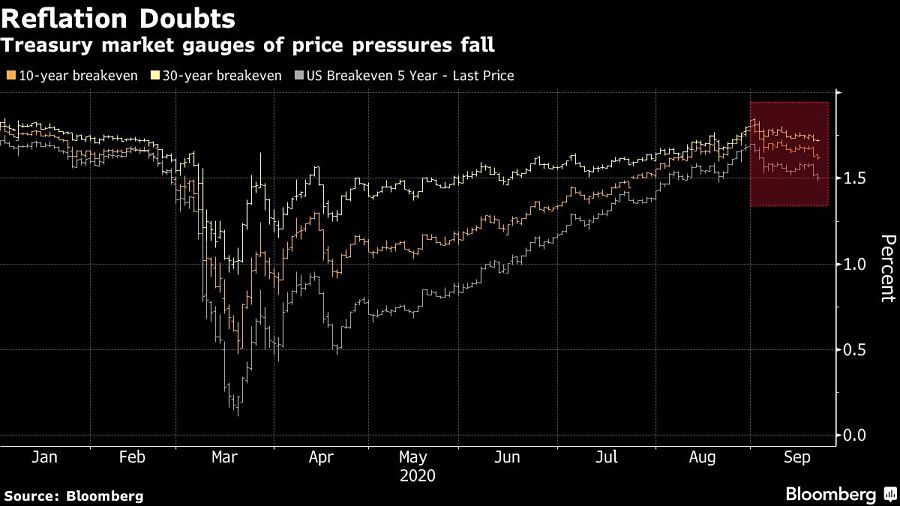
Yield curve
Traders are also pulling back from one of this year’s favored reflation wagers, bets that rates on longer-dated Treasuries will rise more than those on shorter-dated bonds. A steeper yield curve would come about when investors demand more return on Treasuries that could lose value if inflation picks up with economic activity.
After the gap between 5- and 30-year yields widened to 129 basis points in early June as Fed largesse and federal spending sparked a jump in economic activity, the spread has narrowed to about 113 basis points. Short-term yields remained pinned below 1% as the Fed commits to its emergency easing, but long-term yields haven’t pushed higher.
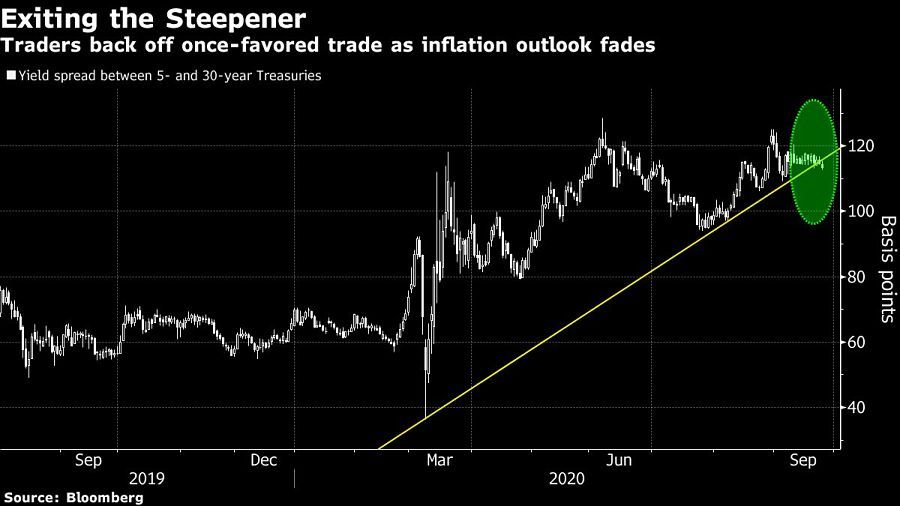
U.S. dollar
The dollar has been a beneficiary in the recalibration of inflation expectations, reclaiming its safe-haven currency status. Investors pile into the greenback in times of stress because it is most likely to maintain its value relative to currencies that fluctuate more closely with global economic activity. After falling to the lowest level in two years, the Bloomberg Dollar Spot Index just rose for four straight days. The gauge is now trading at the highest level in two months.
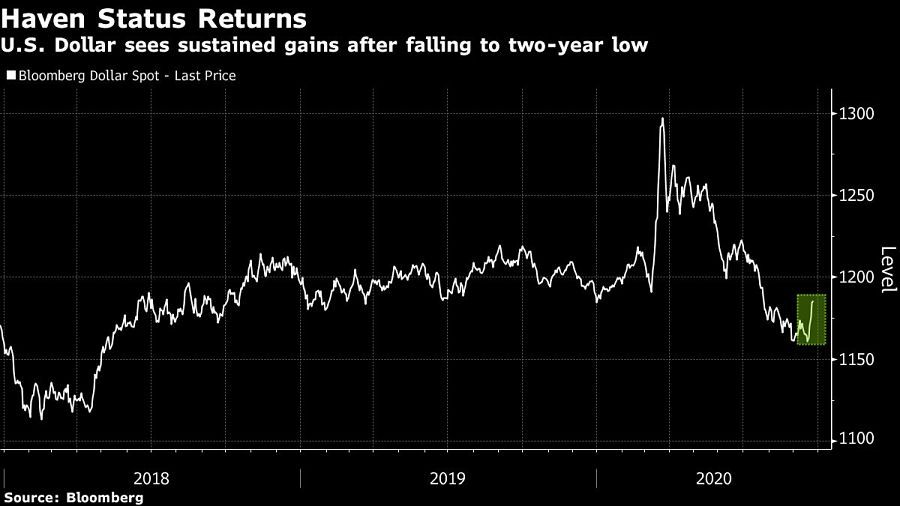
Precious metals
Precious metals, used to guard against rising prices, have suffered. It was just last month that gold prices rose to an all-time high as investors flocked to the yellow metal amid growing expectations for a pickup in inflation. Now, that trade is unwinding as projections for higher price pressures dwindle. Spot gold has fallen about 10% since peaking in early August, and now trades around $1,860 an ounce. At one point this week, it was on track for its worst streak since March.
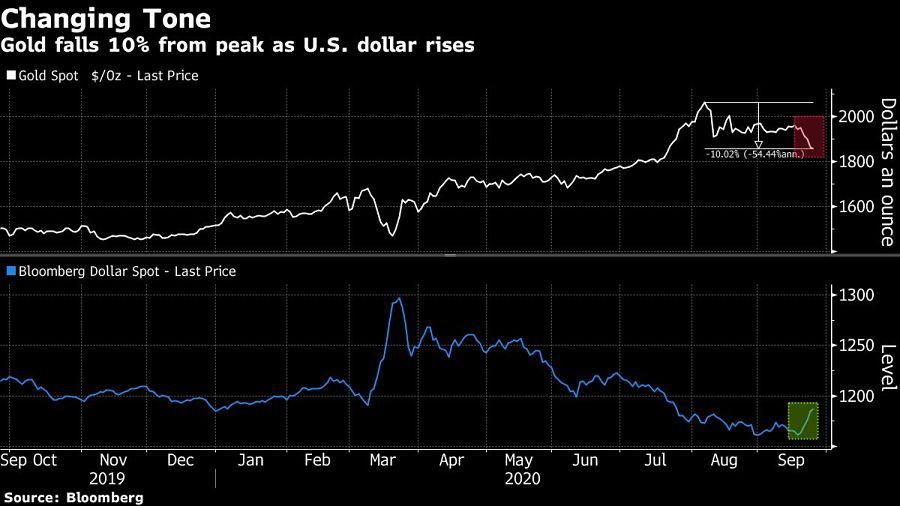
Copper
The dollar’s strength is a problem for commodities that are denominated in the American currency. In particular, it’s hurt industrial metals like copper. Often seen as being closely intertwined with growth and thereby deemed “Doctor Copper” for its economic prescience, the commodity has plunged almost 6% this week after rising 47% since March.
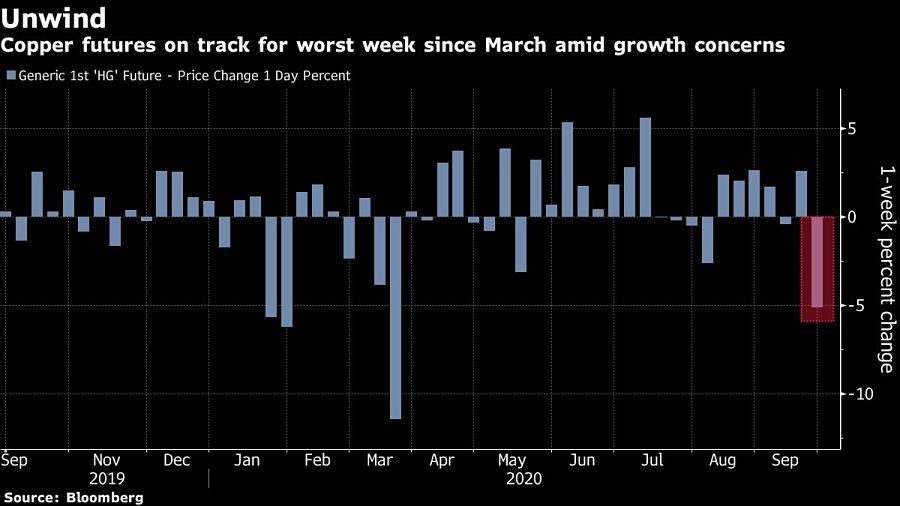
Stocks stumble
The decline in inflation expectations and consequential uptick in real rates — jargon for yields after accounting for inflation — is weighing heavily on equities. A measure of 10-year U.S. real yields bottomed at the start of September. The stock market took notice, with benchmarks topping out on Sept. 2.
Since then, the Nasdaq 100 has fallen more than 13%. The S&P 500 is down almost 10% from a record — the threshold that classically defines a correction. And while megacap tech led the sell-off earlier in September, small caps have taken the lead more recently. The Russell 2000 small-cap gauge is down 6% this week, compared to a drop of less than 1% for the Nasdaq 100.
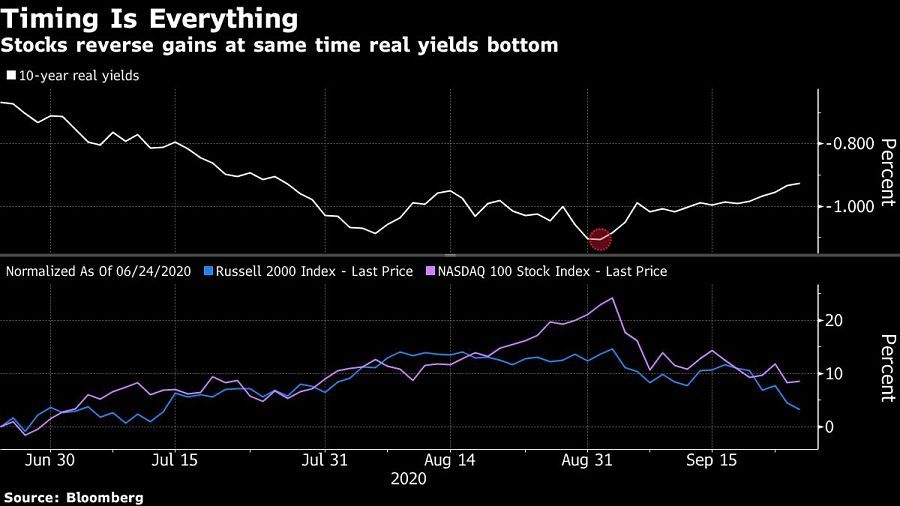
Credit
The corporate bond market has also come under pressure in recent trading sessions, signaling that the equity sell-off may be more related to the fundamental growth outlook. The Bloomberg Barclays Global High Yield Index flipped to an annual loss this week, and investors have been pulling cash from exchange-traded funds that track high-yield debt.
